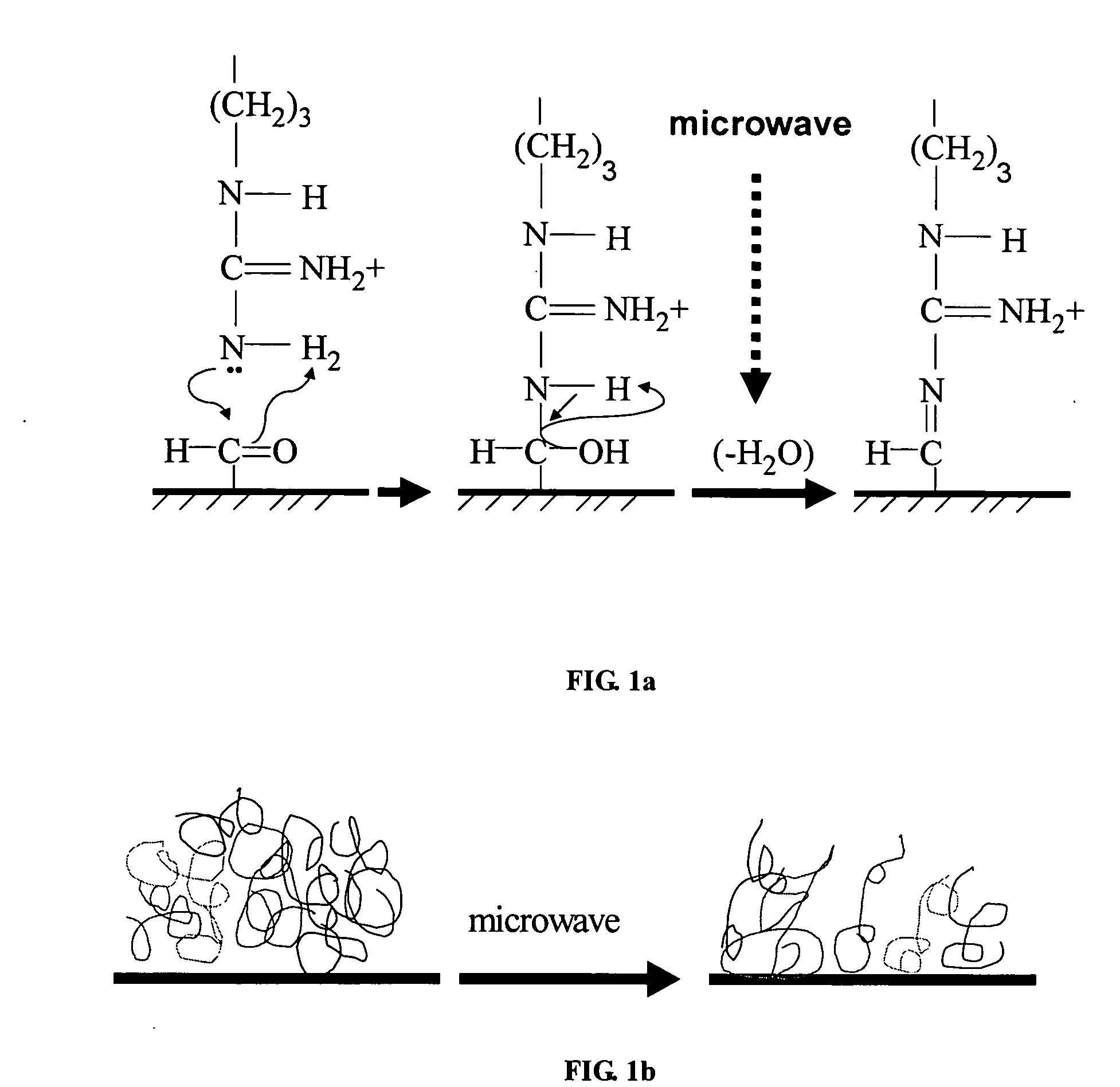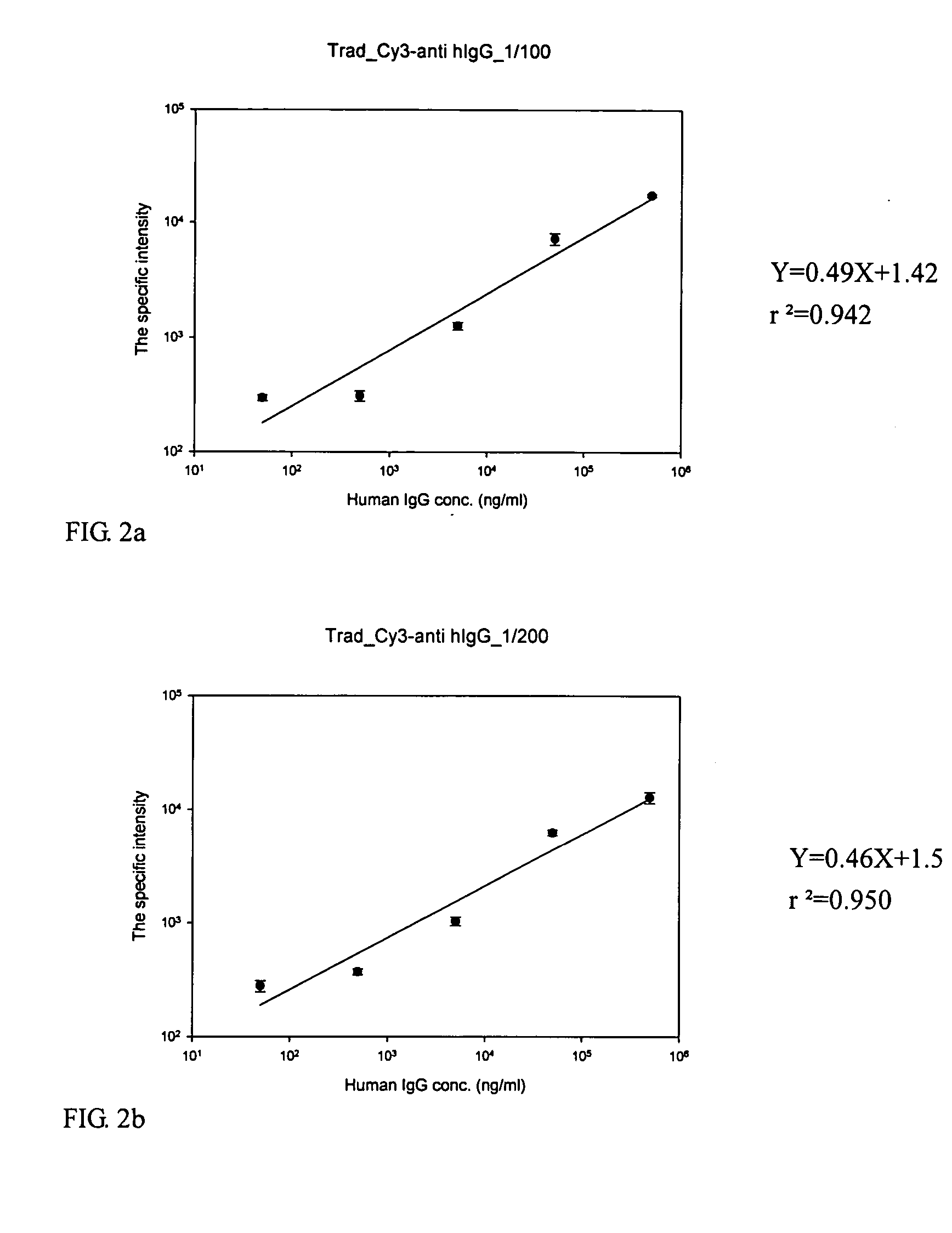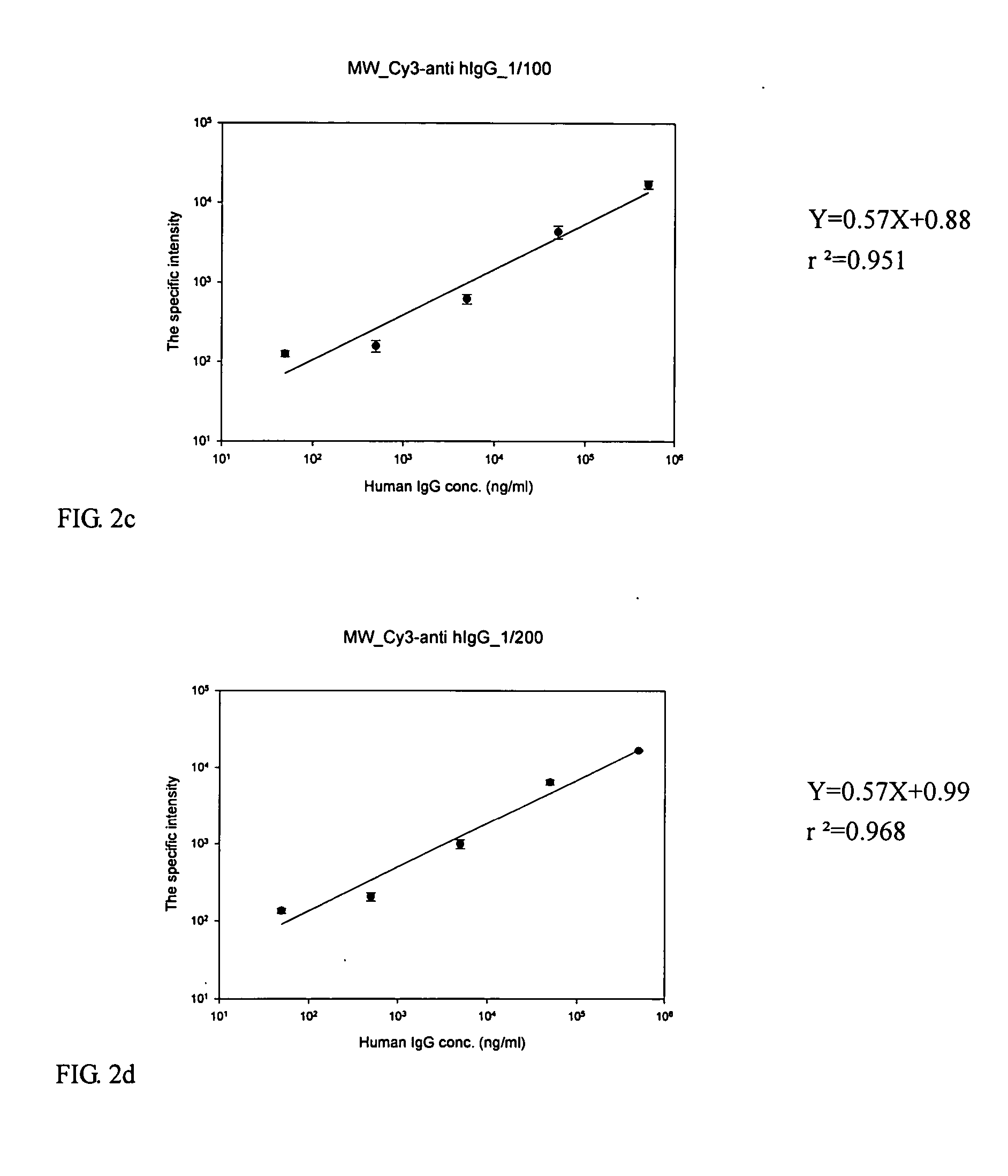Method of microwave-assisted protein array fabrication and full automatic protein array system
- Summary
- Abstract
- Description
- Claims
- Application Information
AI Technical Summary
Benefits of technology
Problems solved by technology
Method used
Image
Examples
example 2
(Preservation of Protein Array)
[0048] Scrape the non-infected and HSV-1 infected cells from the flask, and extract the cells by freeze and thaw repeatedly. The cell extracts is then printed 4 times on each 4 slides and treated by microwave for 30 to 90 seconds. The slides are then preserved in the 4.degree. C. refrigerator for a day, a week, a month and two months. The immunological tests are presented by primary antibody of mouse anti HSV-1 gD antibody and secondary antibody of Cy3 labeled rabbit anti mouse IgG antibody after each preservation time. The result as shown in FIG. 3, the stability of the antigen of the protein array fabricated by microwave-assisted method may preserve for at least two months. The preservation time may be last for 6 months by the use of preservative or store at -20.degree. C.
[0049] Further, except for the advantage for decreasing the fabrication time of the protein array, the present invention may process in a mass production simultaneously from sample ...
PUM
 Login to View More
Login to View More Abstract
Description
Claims
Application Information
 Login to View More
Login to View More - R&D
- Intellectual Property
- Life Sciences
- Materials
- Tech Scout
- Unparalleled Data Quality
- Higher Quality Content
- 60% Fewer Hallucinations
Browse by: Latest US Patents, China's latest patents, Technical Efficacy Thesaurus, Application Domain, Technology Topic, Popular Technical Reports.
© 2025 PatSnap. All rights reserved.Legal|Privacy policy|Modern Slavery Act Transparency Statement|Sitemap|About US| Contact US: help@patsnap.com



